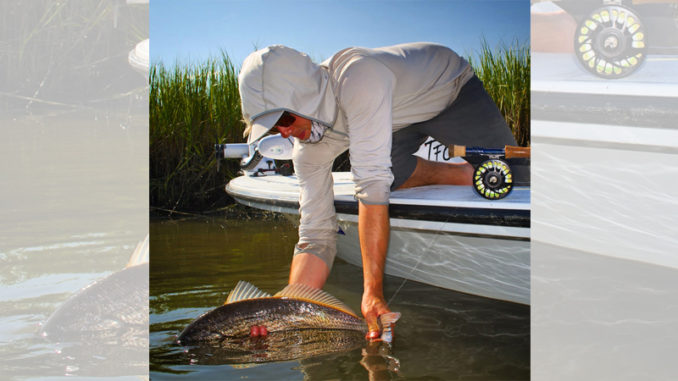
Have fun, but be careful with the schools
There are few times of the year when anglers can stake up on a big school of reds and pull in fish until their arms get worn out, especially when live or cut bait is used. But the right conditions exist during the low-tide, winter fishery. Anglers must be aware of the potential dangers to these schools and become conservation-minded while still having fun catching a few fish.
Schools that stage up in the backs of creeks can number from small, traveling groups of 25 fish to more than 200 packed in a tight wad in just a few feet of water. These fish are practically starved for food and living off their fat reserves. While a big group of hungry redfish may sound invigorating, overfishing these stressed fish will lead to problems.
As winter arrives and the fish show up, many anglers hit them hard, catching as many as they can without moving the boat, especially when fishing chunks of mullet or frozen shrimp. It can be a fish every cast for hours. But the impact of overfishing on these schools is staggering, with an exponential rise in mortality.
Catch a few, move on to another school
Overfishing a school is very tempting, but anglers must learn control to allow future generations to enjoy the sport.
Jeff Lattig of Living Water Guide Service makes a living in the Georgetown area taking anglers into redfish territory. Lattig’s business would be nonexistent if the fish weren’t thriving.
“We catch a few fish out of a school and move on to another creek,” Lattig said. “Beating up a school just shuts them down and increases the mortality rate of these fish.”
Increased fishing pressure also educates fish, making the low- tide fishing tougher.
“Pressured fish are much tougher to catch,” he said.
Newman Weaver of Kingfisher Guide Service also recognizes redfish are vulnerable over the winter, especially for anglers using bait.
“The mortality rate is high with people using bait, and the hook placement is the most-important part,” Weaver said. “The bite is often very subtle, (and) that leads to a deep hookset.”
Anglers need to be alert when using bait or artificial lures and then take their time to gently take the hook out and get the fish back in the water quickly.




Be the first to comment